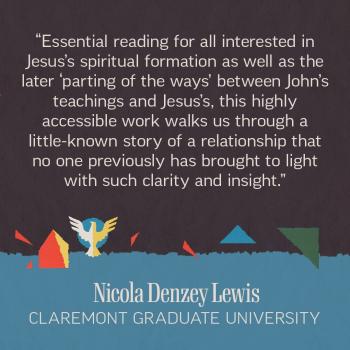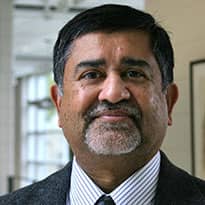It is easy these days to be dismissive of the lessons—practical and spiritual—imparted by sages in the hoary past. The dismissive attitude toward Hindu traditions, not just by foreigners but by India's own, is a result of a variety of factors: colonialism, proselytism, scientism, and blind westernization. It is not surprising therefore that even some of the Indian teachers who traveled west to teach yoga and meditation ignored the disciplined practice of Hindu modes of prayer, worship, and belief. "Just focus on breathing and meditating with eyes closed," seems to be the gist of their advice to Western students.
And in the public pronouncements and in their writings, the well-known marketers of yoga and meditation seem too eager to ignore the sacred language of Sanskrit, and the disciplined meditative utterance of sacred sounds and words that can transform the leaden mind into the bright vehicle for reaching the transcendent. As we read more about some of the celebrated Indian gurus who came to the U.S. to show and tell, we realize how much they sacrificed in their attempts to reach and teach their new students, who had difficulty tucking their legs under them, and getting their ears and tongues attuned to the sounds of Sanskrit.
But the fault is ours too. After I went through the sacred ceremony of Upanayanam or Munji—rather late in my youth, instead of at the age of seven as recommended in the scriptures—I did not practice performing the Sandhyavandanam, the daily dawn and dusk oblation to the Sun. I am not the only lapsed Brahmin around—the "higher caste" men and boys (Brahmins, Kshatriyas, and Vysyas) who, after the sacred thread investiture ceremony, are supposed to perform the Sandhyavandanam daily—who does not perform this duty daily, I believe. But that was not the case a generation or two ago, and I remember my paternal grandfather sitting every morning and evening to perform what I thought was a truly mesmerizing ritual of prayer.
Luckily, there are still some in my family—cousins, their children, and friends—who diligently and thoughtfully perform the Sandhavandanam daily even now, and there is a new interest in these sacred rituals, which are truly necessary if one wants to discipline one's mind to perform serious meditation and yoga. These days there are attempts to enable girls to undergo the sacred thread ceremony so that they too can perform the Sandhyavandanam. I mention all this to bring to your attention, in a roundabout way, the chanting of the Gayatri mantra, which the seven-year-olds, who undergo the Upanayanam, are taught and which then they are supposed to chant regularly during their daily Sandhyavandanam.
No one has written a more eloquent and erudite explanation of the Gayatri mantra than I.K. Taimni (1898-1978), who served as a professor of chemistry at the University of Allahabad in India. A distinguished member of the Theosophical Society, Iqbal Kishen Taimni (his parents were so accepting of all religions that they gave their son a Muslim first name) has written in his inimitable style commentaries on and translations of Patanjali's Yoga Sutras as well as the Shiva Sutra. Taimni begins his introduction to the Gayatri mantra by reminding us that the path to enlightenment rests on three pillars—character building, worship or upasana, and yoga—and without the careful shaping of the mind through worship and self-discipline the path of yoga becomes too difficult to traverse, and our attempts to walk that path end in failure.
Hindus regarded the meditative utterance (japa) of the Gayatri mantra as an essential and integral part of their daily life; that is, when the performance of the Sandhyavandanam was carried out religiously and rigorously. While it may be difficult for everyone to follow the path of self-realization, the great Hindu sages advised and offered us a device to acknowledge and face God daily, and the chanting of the Gayatri mantra is considered the most effective way of doing that for those living the mundane life. The Gayatri mantra is mentioned in all four Vedas, as well as in Tantra texts. It is considered to be of such power and importance that Taimni says, ". . . the great importance of this mantra should leave no doubt in the mind of the reader that it is capable of unfolding our spiritual faculties in a remarkable manner provided it is used properly" (p. 8).





